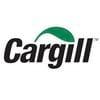Grinding Matters: Why Particle Size Is a Silent Driver of Monogastric Performance
Published: October 9, 2025
Source : Marc Perel, Independent Consultant in Feed Technology | Premix | Additives
Summary
Particle size is a silent but critical driver of feed efficiency for monogastric animals such as pigs and poultry. Far beyond simple machinery, effective grinding requires understanding ingredient consistency, process flow, and importance of adequate settings. Proper control of particle size optimizes nutrient absorption, energy use, and animal health, while poor management leads to costly inefficiencies. This article unpacks how granular mastery, from raw material selection to granulometry control, empowers better feed and better performance
In the world of animal feed manufacturing, some parameters shout: protein levels, energy values, additive profiles. Others whisper, quietly shaping performance from behind the scenes. Particle size is one of those silent drivers. And yet, for monogastric species like pigs and poultry, it can be the difference between optimal feed conversion and costly inefficiencies.
I’ve spent over three decades in feed process technology, and if there’s one lesson I’ve learned repeatedly, it’s this: mastering grinding isn’t just about machines, it’s about understanding the biology, the raw materials, and the entire production diagram.
Why Particle Size Matters for Monogastrics
Monogastric animals rely exclusively on enzymatic digestion, unlike ruminants where microbial fermentation takes the lead. This makes the physical structure of feed a decisive factor: it governs how efficiently enzymes access nutrients.
- Finer particles increase surface area, enhancing enzyme contact and nutrient absorption.
- Too fine, however, can lead to dustiness, reduced palatability, ulcer risks in pigs, and even feed refusal.
- Too coarse, and you risk nutrients passing through undigested, increasing feed cost per kilogram of gain.
Scientific evidence underlines this delicate balance. For poultry, studies demonstrate that diets with a well-defined granulometry improve gizzard development, favor slower digesta passage, and thus enhance nutrient digestibility. Laying hens fed with mash diets containing 55–85% of particles between 1 and 3 mm show improved eggshell quality and a healthier digestive tract.
For pigs, finely ground cereals generally improve feed conversion, especially in young piglets. But sows, by contrast, often benefit from coarser structures that promote chewing and saliva production, supporting gastric health.
And this isn’t just about mash feed. Even in pelleted diets, the initial particle size affects pellet durability, conditioning efficiency, and energy consumption during pelleting. In other words: particle size matters from start to finish.
It Starts with Raw Material Quality
When troubleshooting particle size issues, most people instinctively turn to the grinder. But here’s a truth I often repeat: “A grinder doesn’t make particles bigger.”
The variability of raw materials can disrupt the entire system. I once supported a plant where soybean meal batches fluctuated dramatically, some arriving coarse, others already ultra-fine. Given its high inclusion rate, this inconsistency wreaked havoc on granulometry and process efficiency.
Consistency in some incoming raw material quality is foundational. Without it, even the most sophisticated grinding setup becomes a reactive tool rather than a proactive solution. This is why feed mills should not only monitor ingredient composition but also their physical structure. A proactive quality control system starts before the first particle reaches the grinder.
Diagram Design: Pre-Mixing vs. Pre-Grinding
Grinding strategy depends heavily on the process diagram chosen:
- Pre-mixing diagram: All granular raw materials are ground together before mixing. It’s simple, cost-efficient, and widely used. But it lacks flexibility: every ingredient ends up (more or less) with the same particle size, whether that’s optimal or not.
- Pre-grinding diagram: Ingredients are ground separately before mixing. This allows tailored particle sizes: fine corn for piglets, coarser wheat for layers, for instance. Some advanced facilities even employ dual- or triple-grind strategies for the same ingredient, adjusting profiles depending on the target formulation.
- Hybrid setups: Roller or disc mills combined with hammer mills, operating in parallel, can provide flexibility between coarse and fine profiles depending on the product line.
Choosing the right diagram is like setting the DNA of the plant. It defines not only product quality but also operational costs and throughput.
Sieving: A Forgotten Ally
Sieving is often underestimated in modern feed plants, yet it’s one of the most powerful tools for controlling granulometry.
- Pre-sieving: allows fines to bypass the grinder, reducing unnecessary energy use and preventing over-processing.
- Post-sieving: recycles coarse particles, ensuring final product consistency.
This balancing act between quality, throughput, and energy consumption can significantly influence efficiency. It’s worth remembering that grinding is the second-largest electricity consumer in a feed mill, right after pelleting. Optimizing sieve strategies can therefore unlock both quality gains and economic savings.
Choosing the Right Grinder
Grinder selection is often underestimated during plant design or renovation, yet it dictates much of the feed mill’s long-term efficiency. Let’s look at the main options:
1. Hammer Mill
The industry workhorse. Available in horizontal or vertical designs, hammer mills are robust and versatile. Key factors influencing performance include:
- Screen and hammer design and wear status
- Rotor speed (speed variation is now a must)
- Feeding regularity
- Aspiration efficiency (also consider variable-speed fans)
A well-tuned hammer mill can deliver excellent granulometry, but it requires continuous monitoring. Small inefficiencies, like clogged filters or worn screens, quickly translate into higher energy costs, inconsistent particle size or abnormal moisture loss.
2. Roller Mill
Once mainly used in flour milling, roller mills have gained ground in feed manufacturing. They excel in pre-grinding and producing coarse, uniform profiles. Their advantages include:
- Superior particle homogeneity
- Lower energy consumption compared to hammer mills
- Reduced aspiration needs
Because they grind by shear rather than impact, roller mills permit narrower size distributions, beneficial in many formulations.
3. Disc Mill
A newer entrant (past 20 years), disc mills also rely on shear forces. Their strengths are similar to roller mills (energy efficiency and homogeneity) though they remain less widespread in the industry.
4. Pin Mill
Common in aquafeed and pet food, pin mills are almost absent from the production of terrestrial animal feed. They deliver ultra-fine particles (micronization), making them useful for specialty applications where extremely small particle size is required.
Granulometry Control: From Practice to Precision
For a long time, particle size control was addressed in a rather pragmatic way, with broad tolerance margins. Today, thanks to more stringent standards and improved analytical tools, requirements have become stricter and monitoring more systematic, turning granulometry control into a disciplined and measurable process.
- Sampling points: In pre-grinding setups, raw materials should be checked regularly. In general setups, samples are often taken post-mixer or during loading for mash feed of course.
- Analytical methods: Dry sieving remains the gold standard. Normalized protocols exist under ASAE and ISO frameworks.
- Metrics:
- Mass percentage by fraction (e.g., 5% below 200 µm, 25% between 200– 500 µm, etc.)
- D50 (median diameter): the point where 50% of particles are smaller and 50% larger
- Geometric standard deviation (Sg): indicates particle size uniformity
Accurate measurement transforms grinding control from guesswork into targeted optimization. For plant managers, it provides actionable data to adjust screen size, rotor speed, maintenance operations, or even raw material sourcing.
Conclusion: Precision Is Power
In feed manufacturing, particle size is far more than a technical footnote. It is a strategic lever that touches every aspect of production: from energy consumption and plant efficiency to animal performance and health.
For monogastric species, where digestion is highly sensitive and margins are tight, controlling particle size is non-negotiable. It requires a holistic approach:
- Securing consistent raw materials
- Designing flexible process diagrams
- Choosing the right grinders and maintaining them
- Embedding granulometry control into quality systems.
As a consultant, my role is to help feed manufacturers turn these principles into concrete improvements: optimizing processes, reducing costs, and unlocking animal performance.
Because in the end, grinding isn’t just about breaking things down. It’s about building better feed.

Related topics:
Mentioned in this news release:
FeedSphere Solutions
Influencers who recommended :
Eduardo Frandi ButoloRecommend
Comment
Share

Would you like to discuss another topic? Create a new post to engage with experts in the community.








